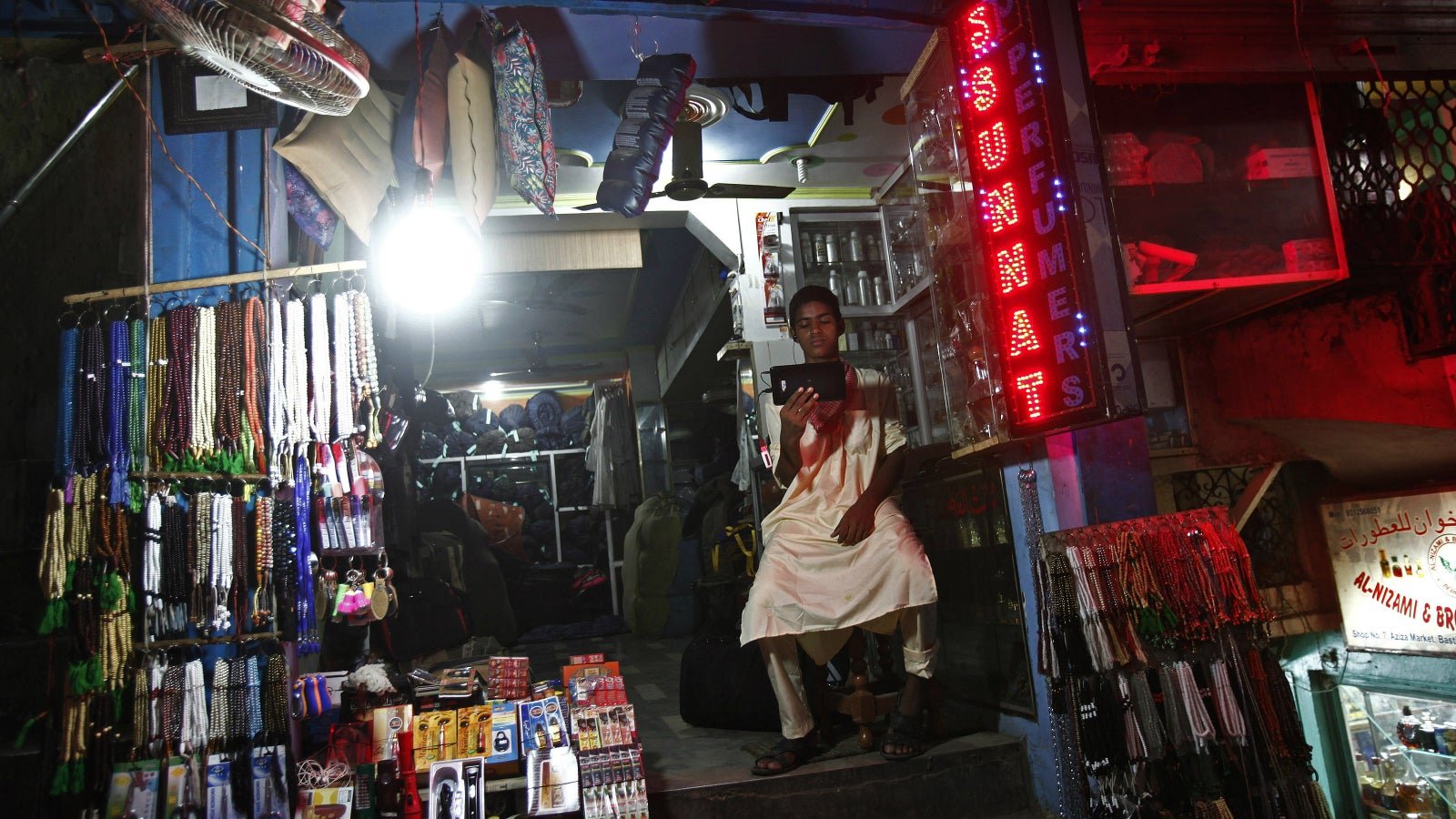How Narendra Modi is driving a low-cost lighting revolution in India
In January this year, Indian prime minister Narendra Modi launched an initiative to change the way India is lit up at night.


In January this year, Indian prime minister Narendra Modi launched an initiative to change the way India is lit up at night.
The initiative—called the National Programme for LED-based Home and Street Lighting—sought to increase India’s usage of LED (light emitting diode) lamps across homes and cities. The goal was to replace conventional lamps, which typically use more power.
LED lamps consume about 80% less energy than incandescent bulbs, and conserving power is imperative for the Indian government given the country’s annual power shortfall of 3.6%.
Under the new scheme, the government also wants to switch all the street lamps across 100 cities to LED lamps by May 2016. “It is far more economical to save power than to produce it,” Modi said during the launch. His government has allocated a budget of Rs 2,500 crore ($378 million) for this initiative.
Now, 10 months after the launch, the programme is finally showing results.
According to the Economic Times newspaper, the production of LED lamps in India has increased 30 times to 30 million units per month compared to last year. These lamps, the government believes, can save 100 billion KwH of electricity annually if they replace some 770 million conventional bulbs that India purchases annually.
LED bulbs have a better shelf life and last almost 50 times more than ordinary bulbs and eight to ten times longer than compact fluorescent lamps. But they are also more expensive.
The programme is led by Energy Efficiency Services Ltd (EESL), a joint venture between state-run firms: NTPC, Power Finance Corporation, Rural Electrification Corporation and Power Grid Corporation. Through EESL, the government procures LED bulbs through competitive bidding and then distributes them to consumers at cheaper rates. That has led to a massive drop in the market price of LED lamps.
With increased production of LED lamps over the past year, the per unit cost has also been brought down significantly, with a 7 Watt LED lamp costing just around Rs100 ($1.5) compared to Rs650 ($9.8) a year ago. An ordinary bulb, in comparison, costs only about Rs20.
“The consumer can obtain the bulb in two formats—upfront payment and on-bill finance scheme. The total cost of the LED bulb under the DELP (Domestic Efficient Lighting Programme) is between Rs100 and Rs105. If a consumer wishes to purchase the bulb through the on-bill financing option, they are required to pay only Rs10 for each bulb and the remaining Rs95 will be added to his/her electricity bill, spread over a duration of 10 months,” a spokesperson for EESL told the Business Line newspaper.
EESL did not respond to an emailed questionnaire from Quartz.
India’s power shortfall
These energy saving schemes will likely have an impact, albeit a small one initially, on India’s power crisis.
With an annual power shortfall of 3.6%, Asia’s third largest economy is in dire need of additional power to fuel its growth ambitions. And nobody knows that better than Modi. After all, his government had stormed to power in 2014, promising faster economic recovery and better infrastructure, especially in the power sector.
“The dream of my government is to provide electricity all seven days a week, 365 days a year, 24 hours a day to every village,” Modi said in August last year. To do that, the Indian prime minister has also banked heavily on renewable energy, especially solar power and has even set an ambitious target of generating 100 gigawatt of solar power by 2022.